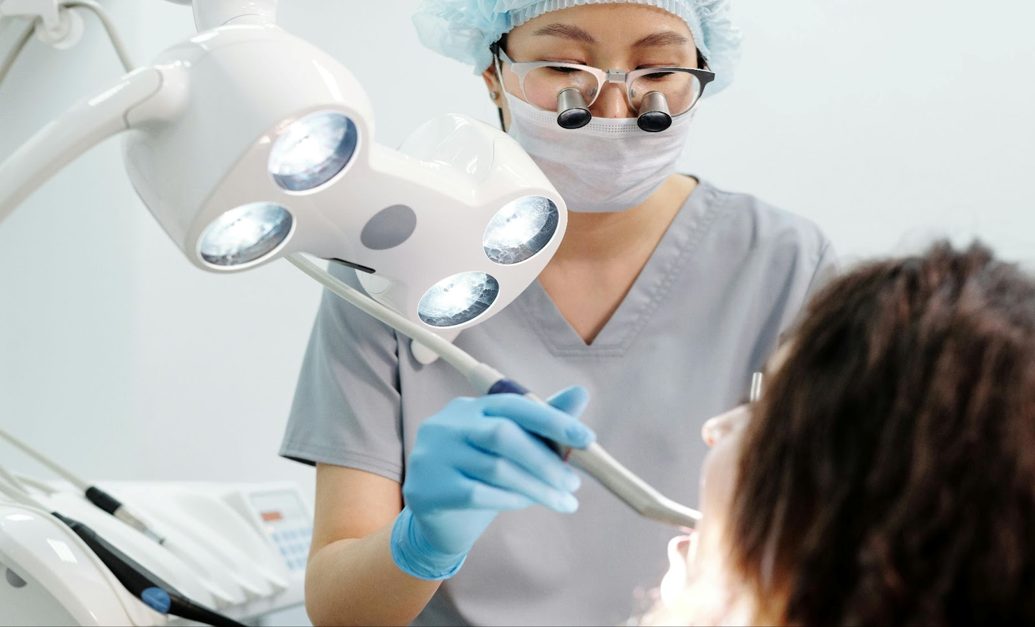
@ShahidNShah


Preserving natural teeth remains the ideal solution for long-term oral health. Modern endodontic treatments offer patients in Burien advanced alternatives to extraction, even in cases previously considered hopeless. An endodontist’s specialized expertise, combined with state-of-the-art technology, provides precise diagnosis and targeted interventions for complex dental issues. Understanding the distinct advantages of endodontic care can help patients make informed decisions about their dental treatment options.
Endodontists distinguish themselves from general dentists through advanced specialization and expertise in root canal therapy and other complex tooth-saving procedures. Their extensive training includes an additional two to three years of specialized education beyond dental school, focusing specifically on diagnosing and treating tooth pain and performing microsurgical procedures.
While general dentists may perform basic root canals, endodontists manage more challenging cases involving complicated root structures, retreatments, and severe infections. Their specialized expertise encompasses the use of advanced technology, including surgical microscopes and 3D imaging systems, enabling them to treat patients with greater precision. They also possess thorough knowledge of pain management techniques and a deeper understanding of internal tooth anatomy, making them the preferred specialists for cases requiring intricate endodontic treatment.
Modern endodontic practices rely on state-of-the-art equipment and technological innovations to deliver ideal patient outcomes. These advanced tools enable endodontists to perform complex procedures with enhanced precision and efficiency.
Digital imaging techniques, including 3D cone-beam computed tomography (CBCT), provide detailed views of tooth anatomy and root canal systems that traditional X-rays cannot capture. This technology allows endodontists to identify potential complications before treatment begins and plan procedures more effectively.
Cutting edge treatment methods incorporate surgical microscopes, ultrasonic instruments, and specialized rotary tools designed specifically for root canal therapy. These instruments allow for minimally invasive procedures while preserving maximum tooth structure. Additionally, electronic apex locators precisely determine root canal length, ensuring thorough cleaning and perfect filling of the canal system.
Recognizing the early warning signs that necessitate endodontic intervention can prevent severe complications and tooth loss. Patients should seek immediate endodontic evaluation when experiencing persistent toothache that lasts more than several days or intensifies with pressure. Additionally, prolonged tooth sensitivity to hot or cold temperatures, particularly when the discomfort lingers after the stimulus is removed, often indicates pulp inflammation or infection.
Other concerning symptoms include swelling or tenderness in the gums, darkening or discoloration of a tooth, and the presence of a pimple-like bump on the gums. Sharp pain when biting or chewing, along with temperature sensitivity, may signal a cracked tooth or deep decay requiring root canal therapy. These symptoms, especially when combined, warrant prompt examination by an experienced endodontist in Burien.
Once an endodontist determines the need for treatment through diagnostic evaluation, the root canal procedure typically involves several precise steps performed under local anesthesia. The specialist creates a small access opening in the tooth’s crown, removes infected pulp tissue, and thoroughly cleans the canal system using specialized instruments.
After disinfecting the canals, the endodontist fills them with a biocompatible material called gutta-percha, sealing the space to avert future infection. Pain management protocols guarantee patient comfort throughout the procedure, while post-treatment medication requirements may include antibiotics or anti-inflammatory drugs. The final step involves placing a temporary filling to protect the tooth until a permanent restoration can be completed by the patient’s general dentist. Most patients return to normal activities the following day with minimal discomfort.
Certain dental conditions present challenges that surpass routine root canal treatments, necessitating the specialized training and advanced techniques of an endodontist. These complex cases often involve intricate tooth anatomy, including curved root structures, calcified canals, or multiple canal systems that require microscopic visualization and precision instruments.
Endodontists possess expertise in managing cases complicated by previous failed root canals, traumatic dental injuries, or anatomical anomalies. Through advanced imaging technology and specialized tools, they navigate complex tooth anatomy while preserving maximum natural tooth structure. The procedure details become particularly vital when addressing infections that have spread beyond the tooth apex, managing resorption cases, or treating teeth with incomplete root development. Their extensive training enables them to handle these challenging scenarios with a higher success rate than general practitioners.
Selecting an endodontist for root canal treatment offers numerous advantages over choosing a general dentist. These specialists complete an additional two to three years of advanced training beyond dental school, focusing exclusively on diagnosing and treating tooth pain and performing root canal procedures.
Endodontists utilize state-of-the-art technology, including digital imaging and operating microscopes, enabling them to treat patients with greater precision. They develop personalized treatment plans based on each patient’s unique dental anatomy and condition. Their specialized expertise results in minimized discomfort during procedures and superior success rates for complex cases.
Additionally, endodontists are better equipped to handle complications, identify hidden canals, and manage severe infections. Their focused practice means they perform considerably more root canal treatments annually than general dentists, leading to enhanced procedural efficiency and excellent outcomes.
After endodontic treatment, patients typically experience mild discomfort and sensitivity that subsides within a few days. Pain management strategies include following prescribed medications, using over-the-counter analgesics as directed, and applying cold compresses to reduce swelling. Patients should avoid chewing on the treated tooth until their permanent restoration is placed.
Nutrition considerations play a crucial role in recovery. Patients should consume soft, lukewarm foods and avoid extreme temperatures that may trigger sensitivity. Maintaining proper oral hygiene remains essential, though patients should brush gently around the treated area. Regular salt water rinses help prevent infection and promote healing.
Follow-up appointments guarantee proper healing and allow the endodontist to monitor recovery progress. Most patients can resume normal activities within 24 hours, though strenuous exercise should be avoided for several days.
Maintaining ideal oral health requires a thorough approach that combines meticulous daily hygiene practices with preventive measures. Patients must establish consistent brushing and flossing routines while avoiding destructive habits such as teeth grinding, nail biting, and using teeth as tools. Regular professional dental examinations and cleanings, typically scheduled every six months, allow for early detection of potential issues and help prevent the need for extensive endodontic treatments.
Establishing an effective daily oral care routine represents a cornerstone of preventive dental health and helps patients avoid serious endodontic issues.
Proper brushing techniques involve using a soft-bristled toothbrush at a 45-degree angle against the gums, employing gentle circular motions for at least two minutes, twice daily. Patients should systematically clean all tooth surfaces, including hard-to-reach areas behind molars and along the gum line. Flossing consistency is equally critical, requiring daily implementation to remove interproximal debris and plaque that brushing alone cannot address.
Additional elements of an extensive oral care routine include tongue cleaning, antimicrobial mouth rinse use, and regular replacement of dental hygiene tools. The timing of oral care activities should align with dietary patterns, particularly after consuming acidic or sugary substances.
To preserve long-term dental health, patients must recognize and eliminate detrimental habits that can compromise tooth structure and root integrity. Common destructive behaviors include grinding teeth, chewing ice, using teeth as tools, and consuming excessive acidic beverages. Tobacco cessation represents a critical step in preventing severe oral health complications, including gum disease and root canal infections.
Nail biting prevention proves essential, as this habit can lead to chips, cracks, and misalignment of teeth. Additionally, patients should avoid clenching their jaw during stress, opening packages with their teeth, or chewing on hard objects like pen caps or wooden pencils. Professional intervention through custom night guards, stress management techniques, and regular dental check-ups can help patients overcome these harmful habits and maintain ideal oral health.
Professional dental visits scheduled twice annually serve as a cornerstone of preventive oral healthcare and endodontic wellness. During preventive dental exams, practitioners evaluate tooth health, identify early signs of decay, and assess the integrity of existing dental work. These examinations often include digital radiographs, which reveal potential issues beneath the surface that may require endodontic intervention.
Regular appointments enable dental professionals to monitor the importance of consistent oral hygiene practices and their effectiveness. Specialists can detect minor problems before they escalate into conditions requiring root canal therapy or other intensive procedures. Professional cleanings remove calcified deposits and address areas where home care may be insufficient. Additionally, these visits provide opportunities for dentists to evaluate changes in oral tissues, screen for oral cancer, and update patient records with new health developments.
When considering endodontic treatment in Burien, understanding the available insurance coverage and payment options becomes essential for effective treatment planning. Most dental insurance plans provide partial coverage for endodontic procedures, typically ranging from 50% to 80% of the total cost after deductibles.
Patients without insurance or those requiring additional financial assistance can explore affordable treatment plans through various channels. Many endodontic practices offer flexible financing options, including interest-free payment plans, third-party financing through CareCredit, or sliding scale fees based on income. Some offices participate in dental discount programs or membership plans that help reduce out-of-pocket expenses. Prior to treatment, patients should consult with the practice’s financial coordinator to review their insurance benefits and discuss available payment arrangements that align with their budget.
Endodontists complete extensive educational background requirements, including four years of dental school followed by 2-3 additional years of rigorous clinical training in an accredited specialty program focusing on root canal treatments and dental pulp.
Children can receive endodontic treatment during early tooth development. Pediatric dental care specialists carefully evaluate each case, considering factors like root formation and tooth maturity before performing necessary endodontic procedures on young patients.
Dental pain localizes to specific teeth, while sinus pain typically affects multiple upper teeth simultaneously. Common sinus infection symptoms include facial pressure, nasal congestion, and pain that intensifies when sinus pressure triggers movement.
Root canals can be safely performed during pregnancy, preferably during the second trimester. Local anesthetics are considered safe, though alternative treatments may be considered. X-rays require proper shielding to minimize radiation exposure.
Tooth shade changes can occur following endodontic treatment due to internal discoloration. Professional bleaching or restoration may be necessary to address aesthetic concerns. Tooth sensitivity concerns typically diminish as healing progresses post-procedure.

What You Should Know: – 23andMe, a human genetics and biotechnology company, has announced its decision to initiate voluntary Chapter 11 proceedings in the U.S. Bankruptcy Court for the Eastern …
Posted Mar 25, 2025 Mergers, Partnerships & Acquisitions Financial Decision Support
Connecting innovation decision makers to authoritative information, institutions, people and insights.
Medigy accurately delivers healthcare and technology information, news and insight from around the world.
Medigy surfaces the world's best crowdsourced health tech offerings with social interactions and peer reviews.
© 2025 Netspective Foundation, Inc. All Rights Reserved.
Built on Mar 28, 2025 at 1:45pm